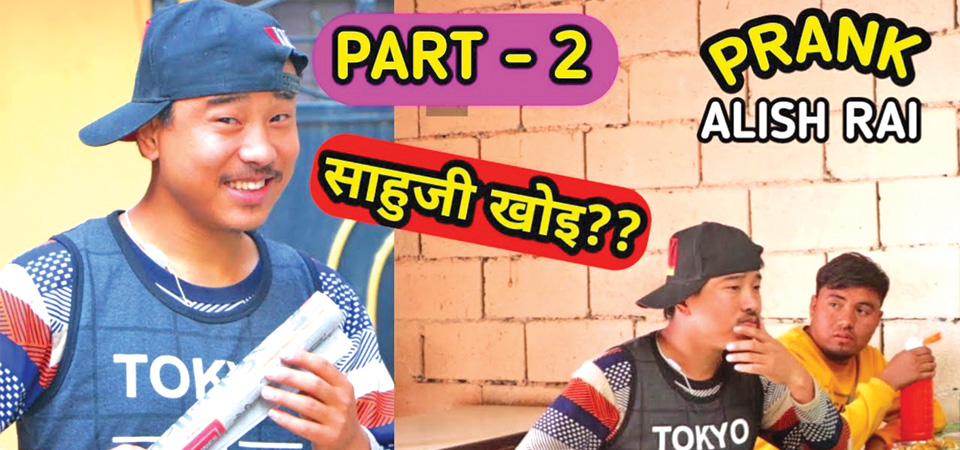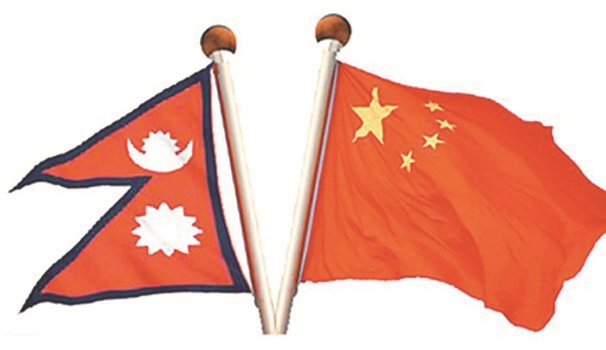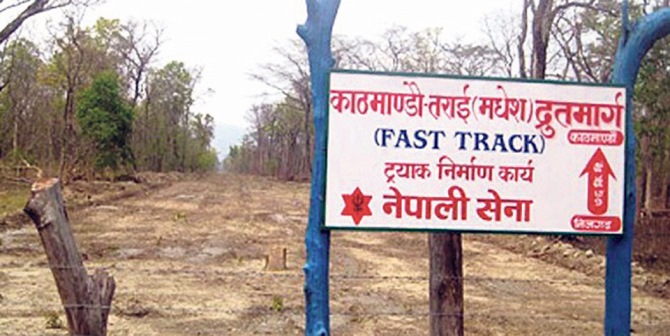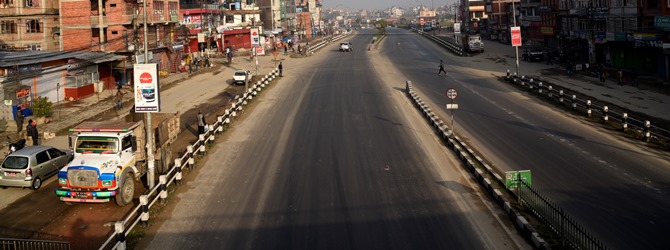‘Prank on strangers without prior consent illegal’

Kathmandu, Feb.1: A man in his 40s was having lunch at a local restaurant near Lokanthali, Bhaktapur, but all of sudden a disguised prankster entered the same hotel and sat at the same table.
A minute after the sitting of the stranger (later disclosed as prankster), who had a paper-made stick in his hand, suddenly banged the table with the stick while another man was quietly having his lunch.
The pranked man then got scared and annoyed. Then, the stranger started shouting at the hotel owner saying 'where is the owner of this hotel?' (saahuji khoi). The prank video was filmed under the title “Saauji khoi? This video has got 1.6M views.
The pranked man has no idea what has been happening at the hotel and to himself almost till the end of filming of the prank video being recorded without his notice and taking prior consent.
When talked about the video, creator and prankster (Alish Rai) on Monday, that had been filmed two years back, conceded that he had not taken prior consent from the man to whom he had pranked while he was having his lunch. Rai has 641K subscribers with a total of 85 different prank videos.
Prankster Rai then started making the man annoyed for almost half an hour just by hitting the table and disturbing the man with different actions making him completely lose his temper.
Later, at the end of the video, the man who was so annoyed with the prankster had nothing to respond and just forced to show his controlled smile when the prankster revealed that he was being pranked.
Several such and more disgusting prank videos have been on the rise and being filmed every day. According to prankster Rai, who began his career as prankster in 2016, prank videos in Nepal began after 2012-13.
On January 27, the Ministry of Home Affairs issued a press statement expressing concern over the filming of prank videos and making general citizens victims in the public places. The statement has also warned of taking legal action under public offense act if it received complaint of filming prank videos without prior consent of the victim.
“Although the humour in such videos is popular among the YouTube viewers, the act is illegal and barred by the laws,” said Bishnu Kumar KC, Senior Superintendent of Police and spokesperson for Nepal Police Headquarters.
If anyone reports that such acts were conducted against their will, evoked fear or embarrassment in them, or resulted in physical harm, then actions can be taken, SSP KC said. “We can take action against them if anybody comes lodging a complaint under public offense and indecent behaviour act,” SSP KC said.
While the content helps the creator garner fame and generate income, it can also affect self-integrity and the safety of the people the pranks are played upon.
With the rising competition among the pranksters to produce more popular and sensational content, these pranksters are infringing the legal limits sometime by filming on sensitive issues like security bodies by wearing police and army dresses, attempting to attack people with weapons (khukuri) in the public places, and terrifying people by becoming ghost at night, among other things. Impersonating law enforcement officers without permission is also punishable under law, SSP KC claimed.
However, for content creator like Niraj Shrestha and Ashish Prasai of Nepali Prank Minister and Nepali Prank of Alish Rai, pranks are done in good humour, and as their companies are registered companies, they claim to have the right to create such social experiments.
Prankster Rai said that the government step taken by issuing the press statement was right and he respected that statement. “I have personally not made any such videos which make people victims and force them to lodge complaint with the police administration,” he said.
But according to Home Ministry’s Joint Secretary and Spokesperson Phadindra Mani Pokhrel, one can film only such acts within the members of their own company and team members to create videos as if it is a real prank. “Involving strangers as a part of their act and breaching their privacy under the guise of law enforcement is a punishable offence,” Joint Secretary Pokhrel said. “Such pranks are allowed worldwide. Why can’t we do it here in Nepal?” questioned prankster Prasai.
Their question is fair but only partially. YouTube has become a hotbed for a number of prank channels for mostly young people to gain more subscribers, views, and a decent income, and in 2018, popular YouTube prankster Chris Sails was arrested for impersonating a police officer.
Even in Nepal, insensitive prank videos are found floating on the video-sharing platform: there’s one in which people are being chased by a performer, who is holding a fake khukuri and axe; another in which people are pushed and ragged without their consent as an act of awareness; in one video some people are misled into talking to a ‘Jalal’ who had fake suicide bomb ticking on them.
In Nepal, prank videos have been around since 2013 when Aakash Sedai was inspired to create his channel Nepali Prankster after binge-watching videos of VitalyzdTV on YoutTube. “I enjoyed watching them and thought of creating my own local prank videos,” said Sedai, 28. Currently, he has 500,006 (506K) subscribers in his Nepali Pranksters YoutTube channel.
Recent News

Do not make expressions casting dout on election: EC
14 Apr, 2022
CM Bhatta says may New Year 2079 BS inspire positive thinking
14 Apr, 2022
Three new cases, 44 recoveries in 24 hours
14 Apr, 2022
689 climbers of 84 teams so far acquire permits for climbing various peaks this spring season
14 Apr, 2022
How the rising cost of living crisis is impacting Nepal
14 Apr, 2022
US military confirms an interstellar meteor collided with Earth
14 Apr, 2022
Valneva Covid vaccine approved for use in UK
14 Apr, 2022
Chair Prachanda highlights need of unity among Maoist, Communist forces
14 Apr, 2022
Ranbir Kapoor and Alia Bhatt: Bollywood toasts star couple on wedding
14 Apr, 2022
President Bhandari confers decorations (Photo Feature)
14 Apr, 2022





.jpg)




